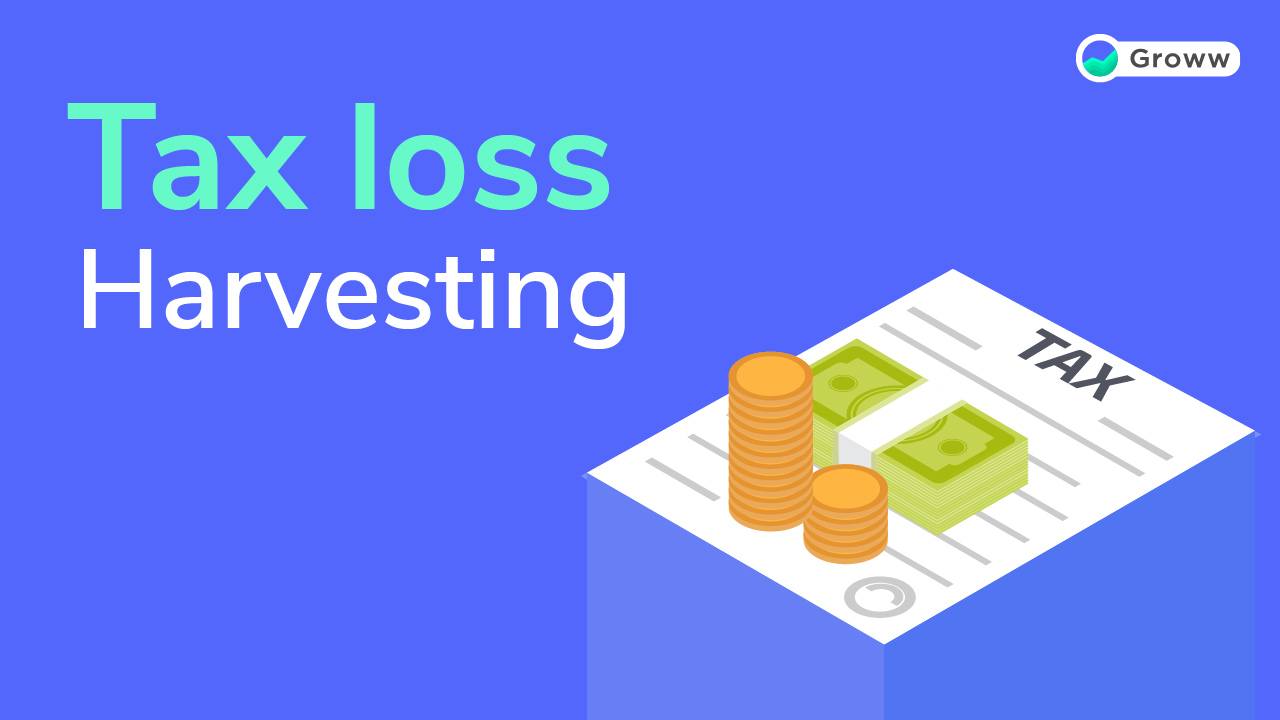Tax Loss Harvesting - Everything You Should Know

As per Union Budget 2024, profits earned from selling equity instruments are subject to two types of capital gains taxes.
- Short-term capital gains (STCG) at 20%, if the investment is held for less than one year.
- Long-term capital gains (LTCG) at 12.5% (exempted up to ₹1.25 lakhs) if the investment is held for more than one year.
What if we told you there’s a strategy to reduce these tax liabilities?
It’s called Tax Loss Harvesting!
What is Tax Loss Harvesting?
It is a tax-saving strategy that offsets capital losses against capital gains.
Here, the investor takes advantage of a red portfolio and sells underperforming assets that are currently at a loss. Using tax loss harvesting, the losses from these sales are then used to balance out the gains made from other profitable investments, which results in reduced taxable income.
This might sound difficult to understand, so let’s take an example here.
Tax Loss Harvesting Example
Let’s say you invested in two stocks:
Stock X: You bought it in May 2024, made a profit of ₹80,000 and sold the stock in August 2024. So, ₹80,000 is your short-term capital gains (STCG), and it’s taxed at 20%.
Tax payable: ₹80,000 × 20%= ₹16,000
Stock Y: You bought another stock in May 2024, but it didn’t perform well, and you sold it at a loss of ₹50,000 after six months. This will be your short-term capital loss (STCL).
Tax payable: Zero tax due to loss.
Total Tax Payable: ₹16,000
With the tax loss harvesting strategy, ₹16,000 tax liability can be reduced to ₹6,000.
Here’s how!
₹50,000 loss from Stock Y is offset against the ₹80,000 gain from Stock X.
This brings your taxable capital gain income down to:
₹80,000 - ₹50,000 = ₹30,000
Revised Tax Payable: ₹30,000 × 20% = ₹6,000
Tax Savings: ₹16,000 - ₹6,000 = ₹10,000
In short, you saved ₹10,000 using tax loss harvesting!
Carry Forward Losses
In the above example, losses were less than gains. (Gains>Losses)
But what if vice-versa happens? Losses become more than gains? (Losses>Gains)
Will Tax Loss Harvesting Work?
Yes, it will, as taxpayers are given one more advantage here!
According to the Finance Act 2002, “The capital losses can be carried forward and used to offset future capital gains for up to 8 assessment years.”
This means you have eight assessment years to adjust your unutilised capital losses against any capital gains you earn in the future.
To be eligible to carry forward these losses, taxpayers must file their income tax returns (ITRs) within the due date for the year in which the loss was incurred.
How Offsetting Works In Tax Loss Harvesting?
Offsetting in tax loss harvesting works differently for STCL and LTCL. Let’s break it down:
|
Type of capital loss |
Can be offset against |
Is Carry forward allowed? |
Carry forward period |
|
Short-term Capital Loss (STCL) |
Both STCG and LTCG |
Yes |
Up to 8 assessment years |
|
Long-term Capital Loss (LTCL) |
Only LTCG |
Yes |
Up to 8 assessment years |
Benefits of Tax Loss Harvesting
Over and above tax savings, individuals can enjoy several benefits with tax loss harvesting. Read on to know more.
Pay Less Tax
Tax loss harvesting allows investors to offset their capital gains with capital losses, which ultimately slashes their tax bills.
Carry-Forward Losses
One of the best advantages of tax loss harvesting is that it allows the carry forward of both STCL and LTCL for up to 8 assessment years.
This means that if you’re unable to offset your capital losses against gains in the current financial year, you still have up to 8 years to adjust these losses against future capital gains.
Offsets Both Short-term and Long-term Gains
There is no limitation on offsetting short-term capital loss (STCL) in tax loss harvesting. It can be adjusted against both STCG and LTCG; however, LTCL can only be offset against LTCG.
Rebalance Portfolio
In tax loss harvesting, you sell your underperforming assets.
This offers a two-fold advantage.
- Firstly, it reduces the tax liability, and
- Allows investors to rebalance their portfolio by investing in better-performing assets.
Essential Considerations of Tax Loss Harvesting
- The timing of selling underperforming assets matters a lot in tax loss harvesting. One wrong move can limit your tax benefits or even lead to unnecessary losses.
- Tax loss harvesting strategies can get complex; it's better to consult a financial advisor.
- Be mindful of whether the asset is classified as a short-term or long-term investment based on its holding period. This affects the type of capital gain or loss it creates, which in turn determines how it can be offset.
Conclusion
With Tax Loss Harvesting, you can turn losses into tax-saving opportunities. By strategically offsetting capital losses against gains, taxpayers can minimise tax bills.
But always remember while saving on taxes is great, long-term wealth creation should always be the goal.
Disclaimer: This blog is solely for educational purposes. The securities/investments quoted here are not recommendatory.
To read the RA disclaimer, please click here